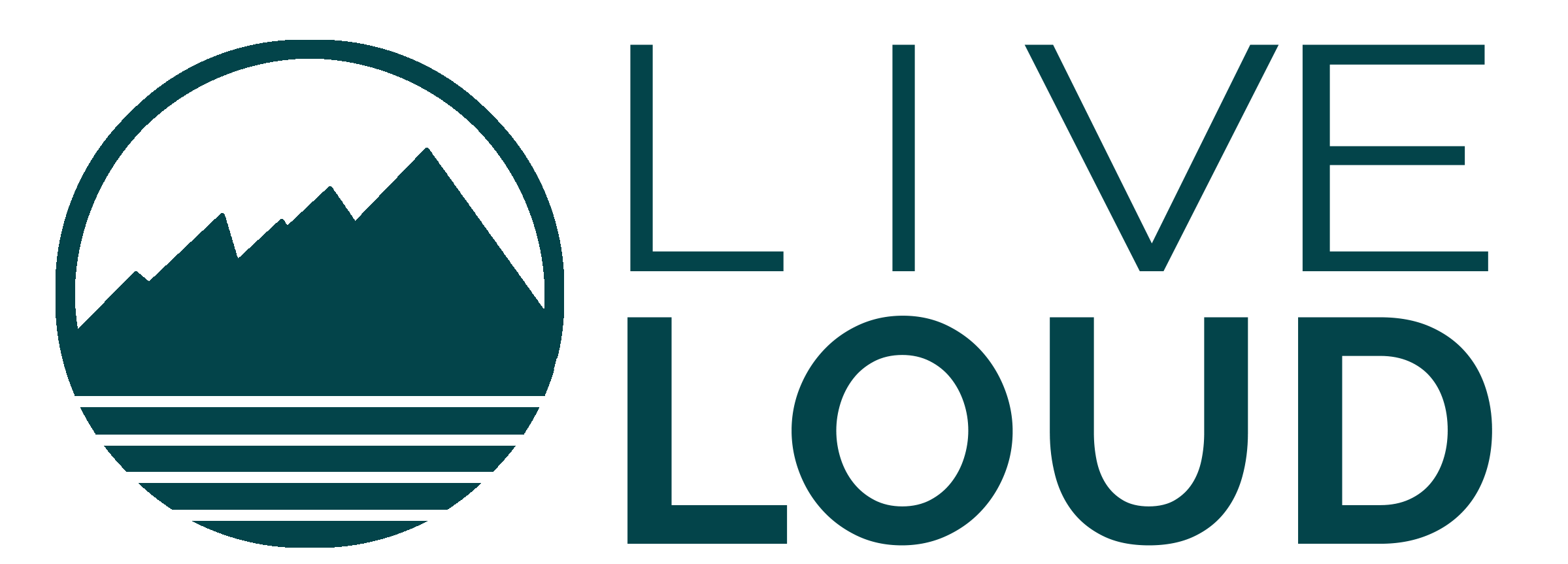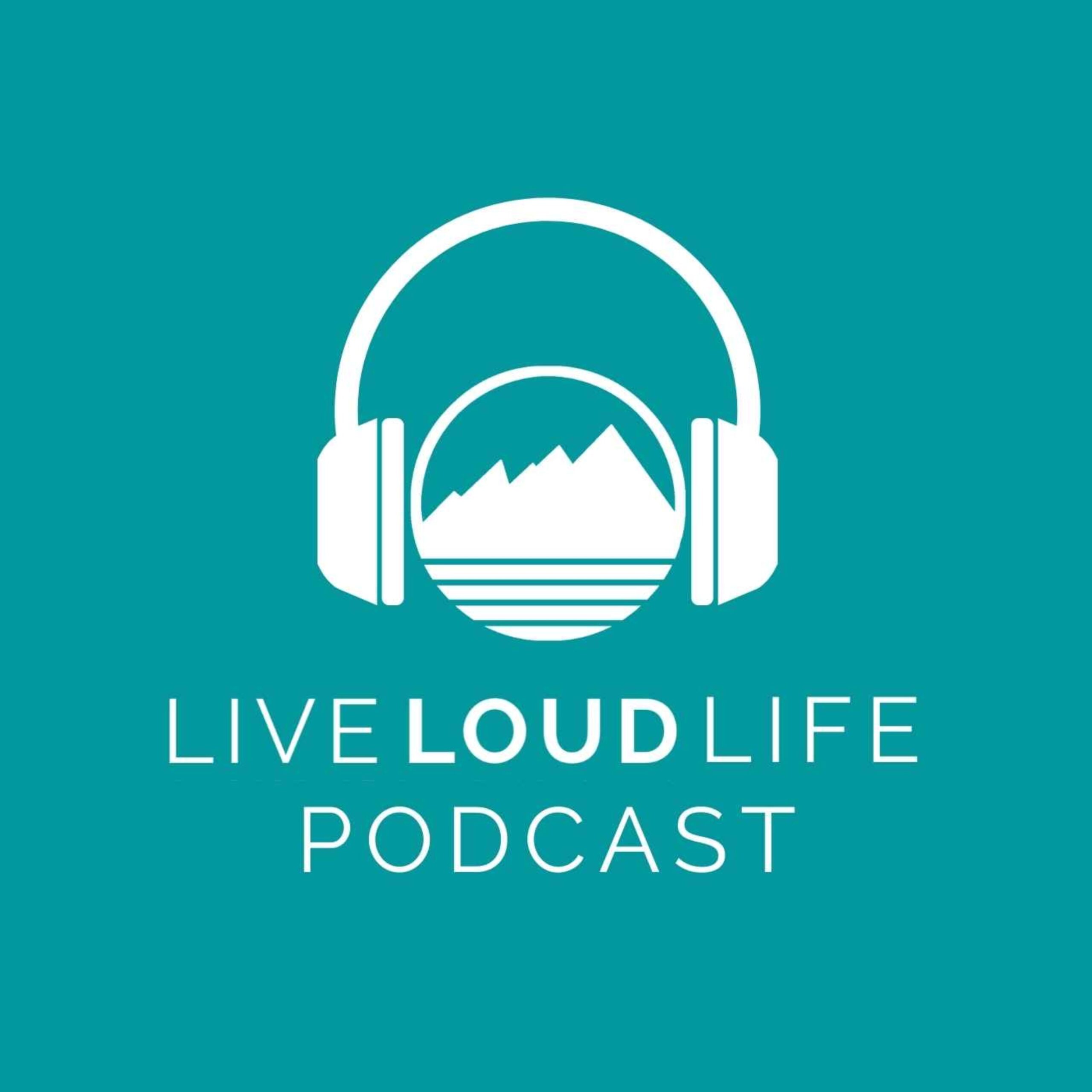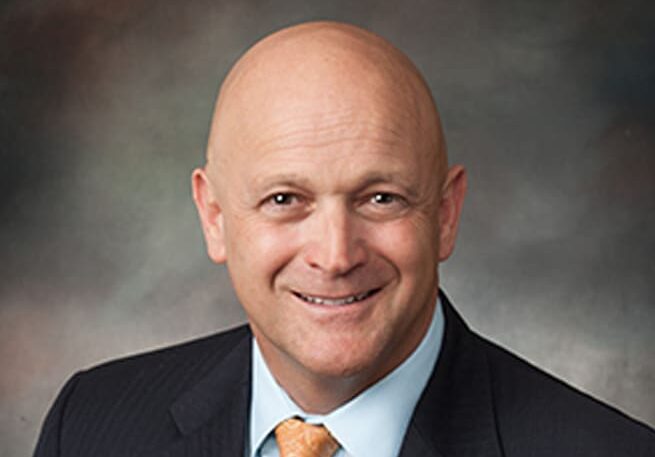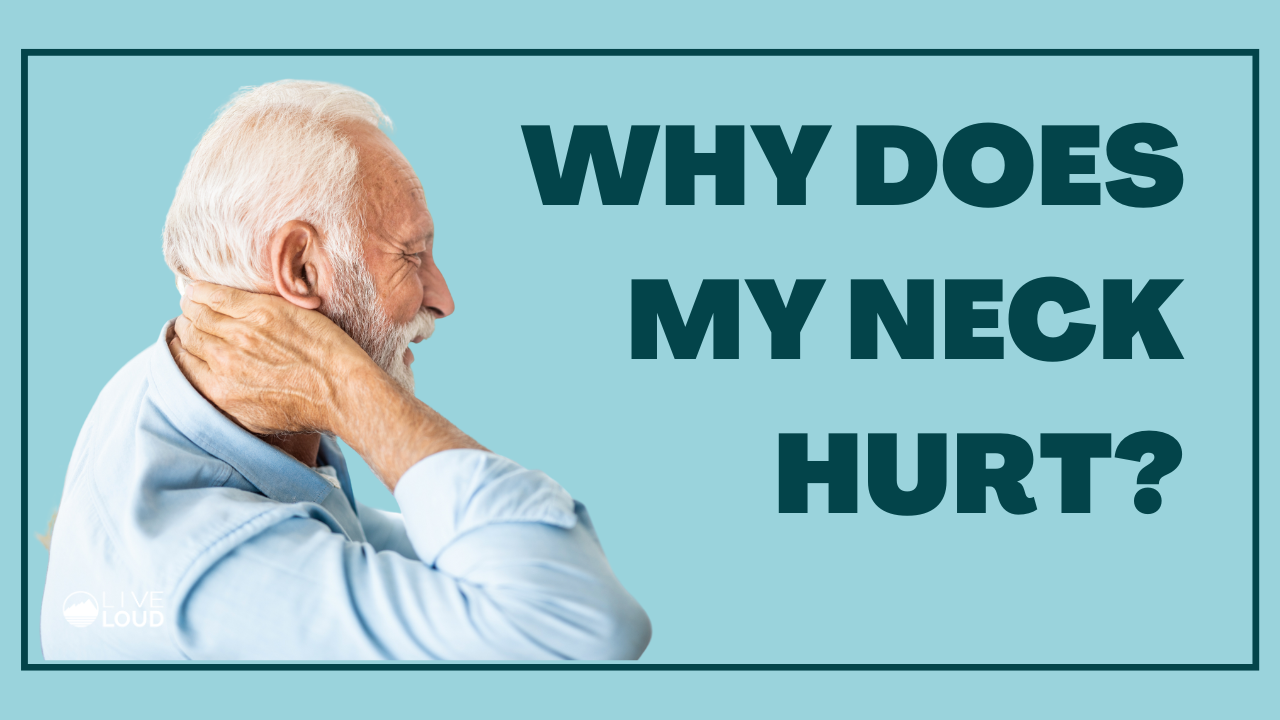Live LOUD Life PodcastLafayette Colorado
Episode 78
How to Train & Reduce Pain When Traveling
With Dr. Antonio Gurule
For many, work and travel is a big part of your lives. You’re on the go, you’re busy, traveling, you’re in a different city, you’re not sleeping in your bed, and this routine is tough on the body. There’s a lot of aches and pains that can come about which are associated with travel. Additionally, It’s tough to stay consistent with your routine of working out, training, consistent diet and eating properly. In this episode, what we’re covering are a couple tips to help you better cope with the chaos due to having active lifestyle, and extensive travel.
EPISODE HIGHLIGHTS:
(00:00) Intro to Traveling and Reducing Pain
(01:23) Dr. Antionio Gurule : Coaching you to understand your body
(03:52) Pain & Tightness from Workout Crutches
(07:54) Fundamentals of How Your Body Feels, Works, & Operates
(11:04) ISO Metric Movements & Injury Recovery
(15:17) The End Game is Function
About Dr. Antonio Gurule
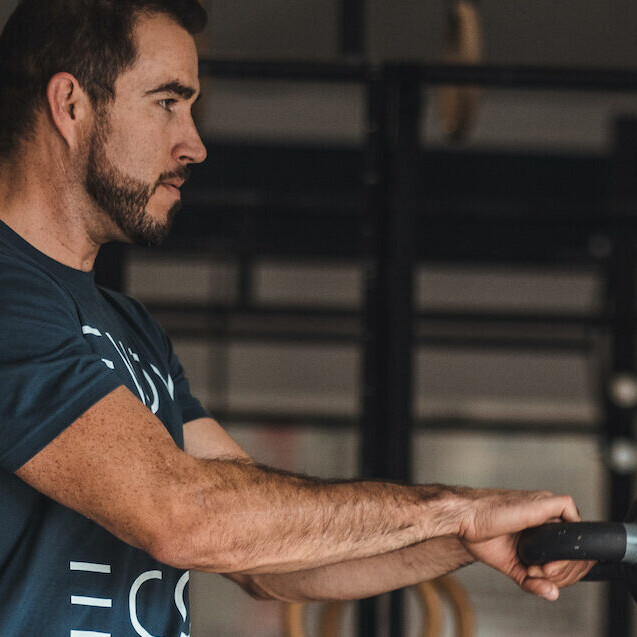
Background:
- Father
- Doctor of Chiropractic
- Owner of Live LOUD
- Personal Trainer & Health Coach
Check Out Some of Our Other Blog Posts and Podcast Episodes
Ep. 78 | How to Train & Reduce Pain While Traveling
[00:00:00] Intro to Traveling and Reducing Pain
[00:00:00] Dr. Gurule:
All right. So for many of us work and travel is a big part of a, uh, for, for many of your lives, right? Um, you’re on the go, you’re busy. Uh, you’re traveling, you’re in a different city. You’re not sleeping in your bed. And this routine is tough on the body. There’s a lot of aches and pains that, uh, can come about this in, are associated with travel and, and, and there’s a part two.
[00:00:23] It’s it’s tough to be. It’s tough to stay consistent with your routine of working out and training and diet and eating. And so what we’re gonna talk about today is a couple just tips to help you, um, better get through that active lifestyle of traveling a lot. Uh, everyone’s life is different. I have a buddy who travels sometimes four or five days a week, uh, where others are doing longer trips.
[00:00:45] Um, because they’re, you know, they’re doing seminars and different things like that, but. What we wanted to highlight at least was the principles of helping reduce aches and pains when traveling and also how to just stay consistent. And, and the consistency standpoint has, is a, has a sidebar of how to work out with.
[00:01:08] You know, maybe not the same equipment or minimal equipment. Okay. So that’s kinda the avenue of where we’re going.
[00:01:21] This is the live loud life podcast.
[00:01:23] Key Point #2 : Dr. Antionio Gurule : Coaching you to understand your body
[00:01:23] Dr. Gurule: My name is Antonio, your host of the live loud life podcast. Um, and our aim is to help guide you to the adventurous life you’re built for. We do that through obviously our hands through chiropractic care. Um, but more importantly, through a framework. And a foundation of coaching and understanding how the human body works and what you can do to best prepare.
[00:01:42] Right. Um, and, and, and so our, our conversation starts with that, right? Knowing your body and knowing your body, this, this is the foundation that answers both of the questions in the topics that we’re concerned about. Now, when you’re traveling many times. You’re, you know, you’re just sitting in the car to, and from the airport, you’re sitting on the airplane, you’re sitting in meetings and you’re just stagnant.
[00:02:10] Now, a lot of us have stagnant lives here, but the element of travel adds on another whole layer to this right. You’re not sleeping in your same bed. Um, you’re not, you’re not driving your same car. You know, all these things basically affect how our body recovers and how you just operate. Now, that being said, as a sidebar to that, there’s an argument to be made about how much of this preparatory foundation you have so that when life gets thrown off, Does that deviate you?
[00:02:41] Right? Uh, I was listening to this other podcast today where, um, uh, Alex Ori, HERI, um, Basey was talking about crutches, right? And, uh, how these crutches in our lives, we become dependent on them. And these dependencies, when, when things change all of a sudden, your dependencies. And you don’t have those dependencies that completely knock you off your rails.
[00:03:09] Right? So for some people they need, um, you know, uh, aids to help them go to sleep, whether that’s, uh, you know, alcohol or CBDs or, or smoking or something like that. Right. And that was the example he used. That’s just one example. Right. And so. You don’t have as solid of a foundation as you think, because you’re dependent on certain things in order to get through life.
[00:03:32] And his argument would even be coffee, right? Um, people were able to live their lives and fully function without coffee before. But yet we, we say, I need this, or I am this without this type of thing. And that’s a crush crutch. It, I dependency. So when you’re traveling for many people, it basically derails what their life was.
[00:03:52] Key Point #3 : Pain and Tightness from Workout Crutches
[00:03:52] Dr. Gurule: And because they don’t have this solid foundation and they have a lot of crutches that they are dependent on. It completely throws everything for a loop. And then your body responds oftentimes with pain and tightness. So from a, from a physiological baseline perspective, what we have to understand is movement is going to, and will always be your best friend, right?
[00:04:11] Moving your way through pain, moving your body so that you can prevent pain. Maintain healthy joints, lubrication, so on and so forth. That is the key when you’re traveling right, is setting up and knowing again, as a sidebar, knowing your body and what areas are maybe quote, unquote, more vulnerable due to previous injuries.
[00:04:33] Um, other areas that just need a little bit more time and attention because you have traveled so much and you know, the problem areas I E lower back, tight knees, tight. Cramped in tiny little, um, airplane seats. Those are the things that you have to preemptively tackle and know, rather than just sitting and looking at your phone while you’re waiting on the computer, you might be doing some mobility exercises off in the corner, in your seat, right?
[00:04:56] So the best fix for understanding a painful, lower back or different things, or just different areas is you have to preemptively. Start moving and create this buffer system that helps. And then in between, and break it up. Now, for many of you, you might be thinking, well, not everyone has to do that. Why don’t I have to do it?
[00:05:15] It’s it’s just how it is, right? Not everyone. Uh, not, not everyone has to lift as much weight in order to get a physiological response to maybe you or, or some people just tend to put on more muscle and they don’t have to live as much. It’s just, it’s just what it is. Right. You can’t make excuses of like, well, why me and not them.
[00:05:32] It’s just what it is. You either can deal with it or you can. Not deal with it. Right. And most of us would argue that dealing with it would be better than just complaining. So you have to just know what that is now. Again, this is the argument of knowing your own body, too many of us. Don’t actually take the time to understand where our.
[00:05:53] Our kinks are, are, are these tight spots or these quote unquote underlying problem areas because we don’t wanna take the time to jail. And I’m guilty as that. I know I have gaps and holes in my training. Um, and so that’s not a perfect system by any means. Um, but there is an element of this exploration model of, again, understanding to knowing your body and also like what, how it responds.
[00:06:16] And Michelle and I, uh, were just talking about this the other day, because. Through, we are rewarded with this, this kind of click bait mentality for things. Right. And I saw this, um, I don’t even know how, or when this would be important, but I was on YouTube, looking up some exercises to prescribe to someone that I didn’t have a video for.
[00:06:39] And. Someone had a video that talked about how to stretch your Sartorious muscle. Now, for most of you, you’re gonna be like, what the hell is that your Sartorious muscle is this very, very thin muscle that runs from the, the front of your pelvis, kind of near your hip. And it kinda wraps down and across your thigh to your inner knee.
[00:06:58] And I, I, I, I, I can’t, you can’t, you can’t even isolate that, but yet it’s one of those things that from someone’s like, oh yeah, that’s a super important muscle. I, I would need to do that, but. It comes back down to movement exploration and understanding like, well, when I move my hip in this way, it feels tighter kinky.
[00:07:17] Okay. Well, I’m gonna try to see if I can help unlock it and move it. Or I’m gonna do a little bit of fascial work or a little bit of soft tissue work or a little bit of something to gimme a response that helps loosen it up and then I’m gonna train it and move it some more. But we want this, Hey, this hurts do this one thing and it’ll fix it.
[00:07:32] Now we’re guilty of creating those because again, we need clicks and we need likes and we need shares so that we can get more and more information out to you. But we, we, we, we wrap it up in that pretty bow, but hopefully the narrative of what we’re saying makes more sense than just, Hey, do this and see if it helps help you.
[00:07:49] Right. Um, top three exercises, those types of things.
[00:07:54] Key Point #4 : Fundamentals of How Your Body Feels, Works, & Operates
[00:07:54] Dr. Gurule: It’s having the basic fundamental understanding of how your body feels works and operates. And that is the key to helping you reduce pain, eliminate pain, uh, prevent pain, and maximize, uh, how your body can operate. Now with that is okay. Well, how do you work out and train?
[00:08:16] Well, here’s the thing. When you sometimes have a crutch such as my workouts revolve around X, Y, and Z, oftentimes this could be like, well, I do CrossFit. Well, when I’m traveling, I might not have access to a CrossFit gym, so shit, what do I do? Right. Um, I need, I need. Equipment in order for me to have a good workout crutch, right?
[00:08:40] That’s a crutch. And, and if you, if, and if you, if you don’t have that ability to fulfill what you need, then it is going, shit’s gonna hit the fan. But if you have. A better basic understanding about again, how your body moves and operates. You can easily find and get creative with, with ways to, to, to get a workout and, and, and train, uh, with just your own body weight.
[00:09:07] It could be incline pushups. It could be using chairs for a dip. It could be running, it could be walking, it could be walking lunges, right? There are so many things that we have the ability to do, uh, that we just, again, Get pigeonhole and narrow down into these crutches, assuming that I can only do, or I can only get something out of this if I have X, Y, and Z.
[00:09:29] So when you’re, when you’re traveling and you do not have equipment, you have your body weight. And for most of us, our body weight is very sufficient for getting us. An appropriate workout. I would argue that no one would say my body weight is too light and I can’t get a sufficient workout. Um, uh, even even bodybuilders who might be extremely lean, they’re familiar with calisthenics and know how to obviously then work their muscles and body in a certain way.
[00:10:00] Uh, now what are some of the ways you can do it? Well, you’ll probably, you might need more repetitions because your body weight might be relatively lighter. What you’re doing in the gym now, as a, as an opposite side of that, your body weight might be too heavy for some of these things. For instance, if someone is not strong enough to do a pushup, well, pushups, aren’t really the best option.
[00:10:23] So bench press would be better for them because the, their strength. Related to how much they weigh is a little bit too heavy in the, in, in dumbbells or something like that would help load them appropriately. But we can reduce our relative body weight in order to achieve pushups by doing incline pushups, you could do this on the wall.
[00:10:41] You could do this. Um, one of my favorite hikes would be like a kitchen sink or, or a bathroom. Uh, countertop, right? It puts you at such an angle that it re significantly reduces your overall relative body weight to what you’re pressing, and it allows you to, again, effectively get a very good upper body workout. Okay. So, um, What do we say? Oh, maybe higher, maybe more repetitions.
[00:11:04] Key Point #5 : ISO Metric Movements & Injury Recovery
[00:11:04] Dr. Gurule: Right. Um, but one of the keys that many of us forget is the power of ISO metric movements and exercises right now, ISO the same metric, meaning distance. Basically, you’re doing a movement in which you are not moving. You’re doing a movement, but you’re not moving.
[00:11:27] Does that make sense? So what would this look like? Well, this would be like a chair squat. So you go up against a wall. You slide down and you pretend like you’re sitting on a chair and then you don’t have a chair. And so you’re basically forming this chair position in which you’re having to have your muscles hold and sustain you.
[00:11:43] And you basically hold that movement as an isometric movement and your muscles are gonna get a very, very. Good workout. You can change levels in depth, back and forth. Mix that in. That is one of the things that oftentimes get so overlooked in exercise prescription.
[00:12:00] And this is especially true, just as a kind of a sidebar when you’re talking about injury recovery.
[00:12:05] And we want to, we want to load tissue during injury recovery, but oftentimes it’s the movement and the stretching of the tissue that might be damaged that can be problematic. But yet when you do isometrics and the load and the distance, or sorry, the distance doesn’t change, this can be in a very effective strategy for helping you recover through tissue damage and injuries.
[00:12:24] Okay. So to wrap up the moral of the story and the theme here is you have to know your body. How do you figure that out? Well, exploration. This is something that we strive for and, and try to, um, encourage and teach as much as we can. And this was, these are principles that, uh, and there’s many that, that talk about this.
[00:12:49] When I name these two names, it’s, it’s not like they’re the only ones, but, um, Katie Bowman. And she has a wonderful, she has a few books, but one of ’em is called move your DNA. And then another one, or, sorry, another author is Todd Hargrove. Um, both. Our fantastic authors are great, uh, educators in, in the, the health and wellness and kind of movement world.
[00:13:13] But a lot of their principles is just an exploration based model. Right. You will understand so much more about your bodies and your joints when you just explore and move and. This as, as everything else that I say provides more context. If you, if you take, we’ll just use an easy example. Like if you take your shoulder and your shoulder only does like three movements and we’ll just say a, pull, a push.
[00:13:41] Um, and maybe some sort of like rotational type of movement. Right. And we’ll say like a throwing. So let’s just say some sort of a poll, like a TRX row pushups and a throwing movement. If that’s all you did, that’s fairly dynamic, especially when you have throwing, you know, you’re going through external rotation and you’re being functional.
[00:13:58] And, um, from a throw, obviously like a throwing and. Maybe beneficial area and then you can definitely develop some strength through the point and the pushing motion. But what, but what about if you fell on the ground? Well, yeah, you did a push up, but that’s a pretty straightforward movement. What if you had to roll to your side and like prop yourself up?
[00:14:18] Um, now you could probably accomplish it, cuz most of us are able bodied humans. But the point we’re trying to get across is when you do different things, all of a sudden you provide more context of the shoulder’s capabilities to your brain and that brain can map out and utilize that it’s like, oh, look at this, look at this.
[00:14:38] When I’m, when I did this, I felt like I could really leverage and push off and I felt strong and I felt stable and I was able to transfer force. Right. That’s kinda how your body thinks and operates from a movement perspective. And all of a sudden starts coding this, these, these different abilities so that if you ever to come across one of those things, again, it puts the pieces together and it’s like, oh, I know that framework.
[00:15:02] You could, you could be dumb doing something. Not, not even remotely similar, but it has, or sorry, the same, but it has like minor similarities. And again, with more of those pieces of the context put together, you have this greater movement map and that map allows you to do so much more.
[00:15:17] Key Point #6 : The End Game is Function
[00:15:17] Dr. Gurule: Cuz again, the end game here is function, right? Yes. We wanna be able to reduce back pain and stiffness when we’re traveling. But when you have better function, that will be an awesome byproduct, right? You wanna be able to have an effective workout without equipment? Well, when you have a better awareness about how your body moves, you just start moving and you can again, create an effective workout or training session without any equipment.
[00:15:41] So coming back down is know the thy self and how to leverage and move and pull and create tension. And create length and create openness. This is all part of the movement code index that you should know about your body. And there’s always gonna be some gaps in holes. Like, you know, it is what it is, but that’s, that’s the powerful thing is there’s clinicians such as myself and personal trainers and other people that can help you fill in that void.
[00:16:10] But before you do that, before you do that, I want you to see me. I would love to help you out, but before you do that, You need to explore yourself, right? This is the, no one. We always say this too, in the office, like I can’t fix your body. I will help guide you. I E right. I will help guide you to, to, to the place that you wanna be.
[00:16:30] But the changes happen with you and yourself. You know what I mean? Like I can’t, I can’t do it for you. I’ll expose certain things or, you know, I’ll make a suggestion about a shape or a position that could be more advantageous for you. But you ultimately make the changes through your own self exploration.
[00:16:47] So that is how the wrapping it up. That is how you reduce lower back pain. Neck pain and stiffness when you’re traveling or sitting on an airplane. And that is how you get effective workouts without having the crutches of a, uh, what, sorry, what could sometimes be the crutches of needing equipment? All right, guys.
[00:17:07] Thanks for tuning in this live without life podcast. If you have questions, comments, concerns, please feel free to leave us a five star review. Uh, well, if you have concerns, you can still leave a five star review, but we wanna know what your comments are. We’d love to hear from you. Uh, if you have any topics of consideration, uh, that you wanna discuss, uh, coming up, we’d love to hear ’em.
[00:17:26] Uh, again, we make this very. Little bias towards, uh, movement modifications and getting out of pain. Uh, but that’s, that’s what we enjoy talking about. And that’s what we love helping each other out, whether you are prenatal, pregnant, uh, whether this is, uh, you know, your kids going through developmental milestones and, and you’re trying to encourage them to help get through some of those road bumps, whether you’re dealing with injuries.
[00:17:49] Um, um, there’s always a way to rebound and get through this stuff through movement. I promise you that it, it will always help him. So until next. Live that.
–
